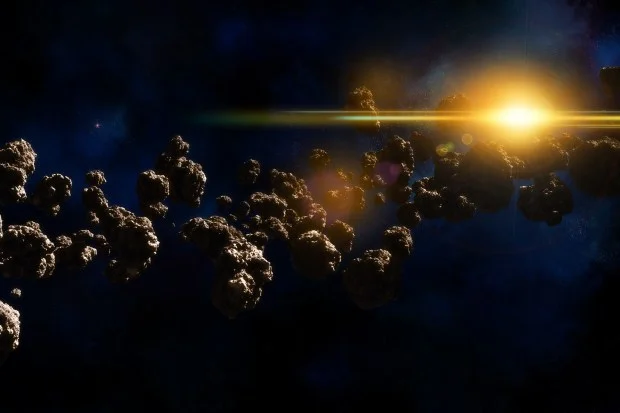
Invisible Asteroid Threat: Are Venus’s Hidden Space Rocks on a Collision Course with Earth?
Scientists are sounding the alarm about a previously unseen population of asteroids lurking near Venus that could pose a significant impact risk to Earth. These so-called "Venus co-orbital asteroids" have remained largely undetected due to the Sun's glare, leading researchers to dub them an "invisible threat." Could these hidden space rocks be on a collision course with our planet?
A recent study, published in the journal Astronomy & Astrophysics and highlighted by Valerio Carruba and colleagues at São Paulo University, reveals the precarious nature of these elusive objects. While Jupiter's Trojan asteroids are well-known, the Venusian counterparts are only now beginning to be understood. "Twenty co-orbital asteroids of Venus are currently known," the authors note, but their co-orbital status, while protecting them from Venus, "does not protect them from encountering Earth."
Potentially hazardous asteroids (PHAs) are defined as having a diameter of at least 140 meters and coming within 0.05 astronomical units (AU) of Earth's orbit. An asteroid of this size could unleash catastrophic destruction upon impact, dwarfing even the atomic bombs of World War 2.

What makes these Venus asteroids particularly dangerous is their unpredictable and "highly chaotic" orbits. Scientists estimate a Lyapunov time of around 150 years, meaning their trajectory becomes uncertain after this period. As the orbits evolve, they can drift into Earth's neighborhood, posing impact risks that current monitoring systems might completely miss.
The primary challenge in detecting these asteroids is the **Sun's glare**. Venus orbits closer to the Sun than Earth, making ground-based observations extremely difficult. The researchers suggest that the upcoming Vera Rubin Observatory beginning in July 2025, might offer brief observational windows, but these are fleeting and insufficient for continuous monitoring.

The scientists strongly advocate for a novel solution: a dedicated space-based observatory near Venus. Positioned to look away from the Sun, this observatory could map and discover the still "invisible" PHAs among Venus' co-orbital asteroids. Such a mission could provide crucial insights into the population's size, composition, and long-term trajectory, allowing for potential mitigation strategies.
"While surveys like those from the Rubin Observatory may be able to detect some of these asteroids in the near future, we believe that only a dedicated observational campaign from a space-based mission near Venus could potentially map and discover all the still 'invisible' PHA among Venus' co-orbital asteroids," the researchers conclude.
Is Earth at risk from these hidden asteroids? The study highlights the need for increased vigilance and innovative detection methods to protect our planet from a potential impact event. Are we prepared to invest in a space-based observatory near Venus to uncover the true extent of this invisible asteroid threat? Share your thoughts and ideas in the comments below.